Is there any reason to be suspicious of the injuries that have struck some Chinese players before or during matches against their compatriots in recent major badminton events? Badzine has again run the numbers to see just how common it is for injury to determine the victor.
By Don Hearn. Photos: Badmintonphoto
Three years ago, Badzine compiled the numbers for all of the major badminton tournaments of 2011 and the results showed a rather worrying discrepancy between the completion rates of matches particularly involving Chinese players. It turned out that 20 of the 99 matches in which Chinese shuttlers played their team-mates did not reach completion, either with one player forfeiting mid-match or informing the tournament doctor prior to the match of the player’s inability to compete.
With similar circumstances surrounding walkovers in the recent Badminton Asia Championships, the Singapore Open, and the Malaysia Open, as well as last summer’s World Championships, we decided to run the numbers again to see what they will tell us the frequency of injury as a determiner of badminton results.
The simple answer to the above question is that injury hardly ever affects the outcome. The lowest percentage of complete matches was over 92% but most teams completed 100% of all internecine matches.
Moreover, we found that no figure as striking as a one-in-five ratio emerged this time. In addition, the rate at which injury afflicted all-China matches was nearly matched by the impact the percentage observed in all-Korean affairs. No one team came even close to a total like those 20 incomplete matches that were found in 2011.
The data set
The period under study here is the last twelve months of international individual badminton events, in other words, those held within the qualification period for the 2015 BWF World Championships. This twelve-month period happened to include only 12 Superseries events, due to the rescheduling of the Korea Open from January to September, with an additional ten Grand Prix Gold tournaments, eight Grand Prix events, plus the 2014 World Championships, Asian Championships, and Asian Games.
Invitational events have been excluded and although the individual events of the 2014 Asian Games have been counted, the team event was not, nor were team matches from the Thomas and Uber Cup competitions. Matches from qualifying rounds have been excluded outright and first-round walkovers were not counted, as most of these are the result of late withdrawals.
The total number of matches considered was 5,220 and all results were taken from the tournamentsoftware.com site used by the Badminton World Federation (BWF). Separate totals were compiled for top teams China, Korea, Japan, and Indonesia. Midway through the counting process, it became evident that there were also significant numbers of matches between compatriots from Chinese Taipei and India, particularly in their home events, but as virtually all of these matches were completed, they merely feed into the aggregate at the far right of the table below.
The results
The numbers show that China once again had the highest incidence of injury obviating or abbreviating matches between team-mates, with Korea’s percentage a close second. Altogether, 115 main-round matches were scheduled between opposing Chinese players or pairs and of these, 9 matches, or 7.8 percent, ended in either a walkover or a retirement. In contrast, of the 965 matches in which Chinese players took on international opponents, only 7 ended prematurely.
Korea’s numbers were similar but, predictably, were based on a smaller sample. 58 matches involved Koreans on both sides of the net – 33 of these from the Korea Grand Prix alone – and of these, 4 ended in a walkover or retirement, for a percentage of 6.9%. It is worth noting that two of these four incomplete matches were recorded from the same injury to Jang Ye Na on finals day of the Korea Grand Prix. The Korean rate of injury overall was higher than it was for China, as a further 10 matches were not completed, from among the 689 in which Koreans faced international adversaries, for an average of 1.5%.
| China vs. Others | China vs. China | Korea vs. Others | Korea vs. Korea | Japan vs. Others | Japan vs. Japan | All Inter-country | Same-country (excl. CHN & KOR) | |
| Total Matches (World & Asian Champs, Superseries, Grand Prix & Gold) | 965 | 115 | 689 | 58 | 774 | 56 | 4,681 | 365 |
| Incomplete Matches | 7 | 9 | 10 | 4 | 4 | 1 | 75 | 2 |
| Percentage | 0.7% | 7.8% | 1.5% | 6.9% | 0.5% | 1.8% | 1.6% | 0.5% |
Other teams with large numbers of internecine matches showed rather different results. While one of the 56 all-Japanese affairs ending in a retirement made for a higher rate than were their 4 incomplete matches out of 774 contests with non-Japanese shuttlers, the resultant rate of 1.8% was almost identical to the overall rate of 1.6% for all matches involving players flying different flags.
The ones most commonly playing against their own team-mates were actually the Indonesians. 132, or 12% of all Indonesian matches in the past 12 months, were against other Indonesians and not one ended in a walkover or retirement.
Finally, if we exclude all-Chinese and all-Korean matches, we find that the rate of injury affliction to be exceedingly low for most other matches involving compatriots. In fact, only two of those 365 matches ended prematurely. In fact, the only one apart from the single all-Japanese affair saw an Indian mixed pair retire after losing one game in a first round match against an Indian-Russian combination.
As mentioned above, the rate of 7.8% of all-Chinese matches not running their course seems much lower than the over 20% in 2011. Figures were not separately compiled for total all-Korean affairs in that year but it is known that five such were not completed in 2011. Meanwhile, just two Grand Prix Gold events that year produced over fifty all-Korean matches so it is highly unlikely that the Korean rate in 2011 was any higher than over the past year.
Conclusions?
It should be noted that no trained statisticians have performed any analysis on these numbers to determine whether any of the contrasting rates are statistically significant. From the absence of any disciplinary action by the BWF, it stands that the official reason for every walkover and retirement counted here is either illness or injury and we can assume that each one has been signed off on by a tournament doctor.
For those observers who were not prepared to believe that the distribution of walkovers and retirements in 2011 related merely to random injuries, it is possible that these May 2014 – April 2015 numbers will be easier to accept. Indeed, nine injuries is not a large number and players like Li Xuerui took long layoffs after forfeiting matches against compatriots.
While the Koreans who cited injuries were all back to action relatively quickly, the total of four incomplete all-Korean matches is actually the result of just three injuries, with both Kim Sa Rang and Shin Baek Cheol taking extended layoffs soon afterward.
Again, a pessimist could well be suspicious that numbers could skew again with the onset of the qualifying period for Rio but most badminton-lovers will be hoping that their favourite players will stay healthy and that all the results in the coming twelve months will be decided by the action on court.
![Going the distance: How often do injured team-mates mean victory? Is there any reason to be suspicious of the injuries that have struck some Chinese players before or during matches against their compatriots in recent major badminton events? Badzine has […]](http://www.badzine.net/wp-content/uploads/Newsflash-thumbnail.png)
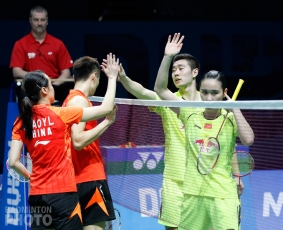

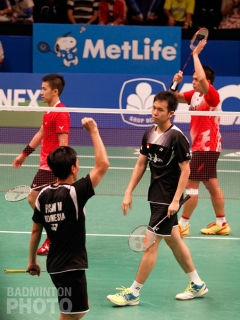
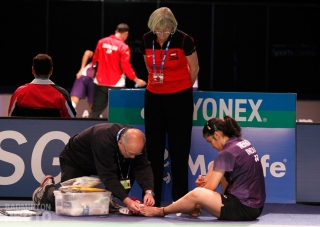

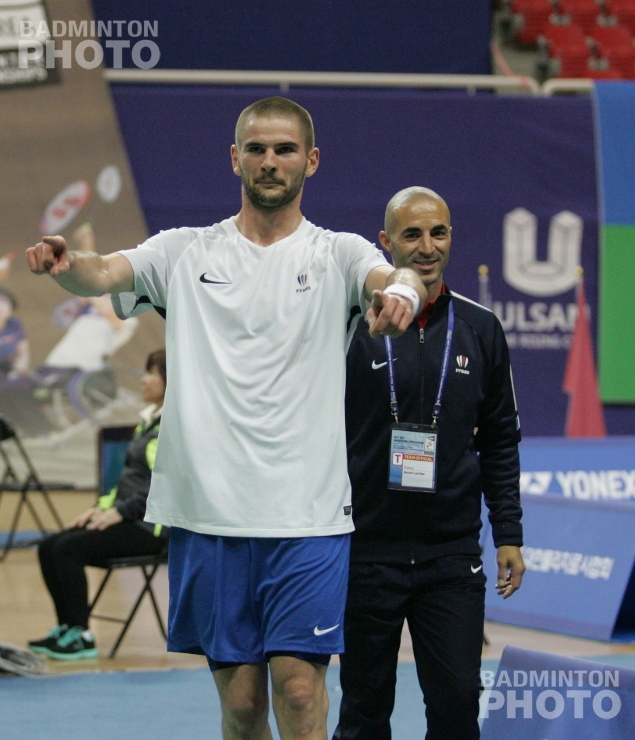

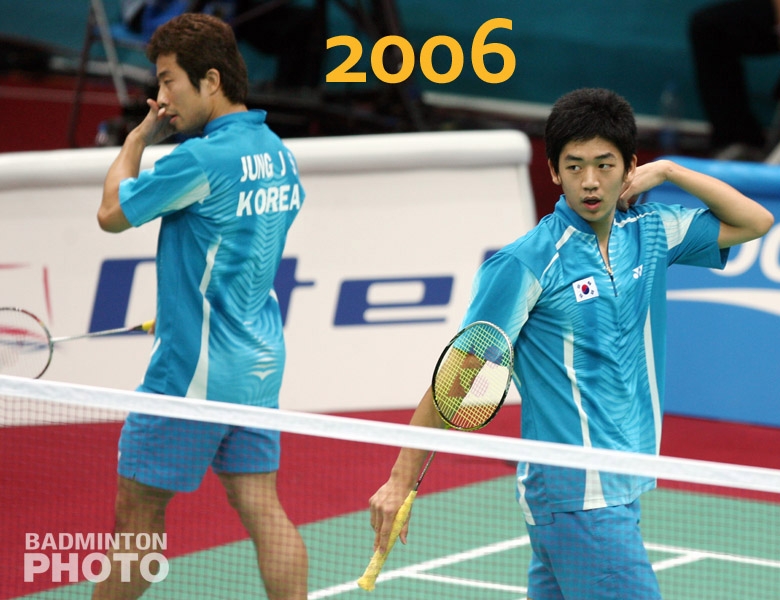
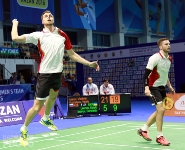

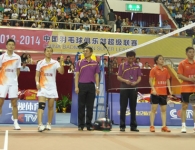
Leave a Reply